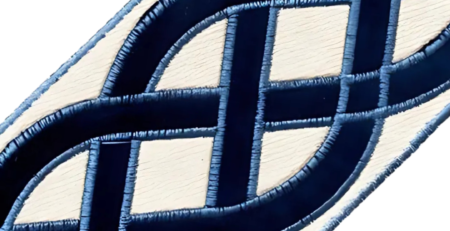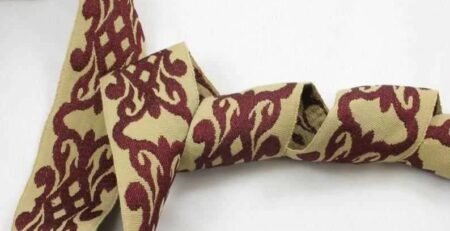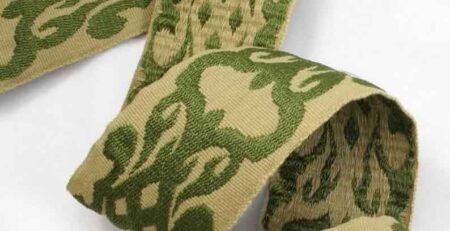Trimmings: A Complete Decorative Guide
When it comes to transforming the ordinary into the extraordinary, trimmings play a vital role across industries such as fashion, interior design, upholstery, and crafts. These often overlooked details bring sophistication, elegance, and personality to garments, furnishings, and accessories.
This comprehensive guide explores everything you need to know about trimmings—from types and materials to practical applications and creative ideas—so you can confidently incorporate them into your designs or purchases.
What Are Trimmings?
Trimmings refer to decorative elements or embellishments added to the edge or surface of an item to enhance its appearance. They are used in textiles, garments, upholstery, curtains, cushions, and even stationery or packaging design. Trimmings add texture, color contrast, and aesthetic appeal, turning simple items into statement pieces.
Common Forms of Trimmings
-
Braids
-
Ribbons
-
Fringes
-
Lace
-
Piping
-
Tassels
-
Appliqués
-
Cordings
-
Embroidery
These additions may be functional (such as providing structure or sealing seams), purely decorative, or a combination of both.
Historical Significance of Trimmings
The use of trimmings dates back centuries. In ancient Egypt, Greece, and Rome, trimmings symbolized wealth and social status. European nobility from the Renaissance to the Victorian eras frequently adorned clothing and home decor with intricate lace, gold threads, and elaborate fringes.
During the Industrial Revolution, trimmings became more accessible to the middle class due to advancements in textile manufacturing. Today, modern machines mass-produce trimmings, but handcrafted and artisan options remain popular in luxury and bespoke markets.
Types of Trimmings and Their Uses
1. Fringe Trimmings
Fringes consist of loose threads, cords, or beads that hang from a strip of fabric. They are often used to decorate:
-
Curtains and drapes
-
Cushion edges
-
Tablecloths
-
Western-style clothing
-
Costume design
Popular Types of Fringe:
-
Bullion fringe (twisted cord)
-
Chainette fringe (soft yarn)
-
Beaded fringe
-
Tassel fringe
Fringes provide movement and a touch of drama to a design.
2. Tassel Trimmings
Tassels are ornamental bunches of threads tied at one end. They are a timeless addition to:
-
Keychains and bookmarks
-
Curtain tiebacks
-
Lamp shades
-
Luxury clothing and accessories
Often considered luxurious, tassels add an antique or bohemian charm.
3. Braid Trimmings
Braids are narrow decorative bands made by interweaving threads. They add texture and style to:
-
Military uniforms
-
Jackets and blazers
-
Upholstered furniture
-
Headboards and cushions
Braids come in geometric or ornate designs and are easy to sew or glue onto surfaces.
4. Piping and Cording
Piping is a narrow strip of folded fabric sewn into seams to define edges. Cording is similar but usually thicker and can be decorative or structural.
Best for:
-
Pillows
-
Seat cushions
-
Furniture edges
-
Handbags and wallets
Piping helps achieve a tailored, professional look.
5. Lace Trimmings
Lace offers a delicate, feminine touch. Available in cotton, nylon, and silk, lace trimmings are used in:
-
Wedding dresses
-
Lingerie
-
Baby clothing
-
Curtains and table runners
Lace can be flat or gathered, scalloped or symmetrical.
6. Ribbon Trimmings
Ribbons are flat fabric bands available in satin, grosgrain, velvet, or organza.
Uses include:
-
Gift wrapping
-
Hair accessories
-
Scrapbooking
-
Decorative bows
-
Dress accents
Ribbons are cost-effective and versatile.
7. Appliqués
These are fabric patches sewn or glued onto garments or decor items to create patterns or images.
Commonly found on:
-
Denim jackets
-
Bags
-
Children’s clothing
-
Throw pillows
Appliqués allow personal expression and creativity.
Trimmings by Industry
Fashion Industry
Trimmings elevate apparel by adding texture, color, and embellishment. Designers use:
-
Rhinestone trims for eveningwear
-
Lace trims for lingerie and bridal fashion
-
Grosgrain ribbons for collars and cuffs
-
Fur and feather trims for couture designs
Trimmings can create brand distinction and enhance perceived value.
Interior Design and Upholstery
Home interiors benefit greatly from decorative trims. Examples include:
-
Beaded fringe on lamp shades
-
Piping on couch cushions
-
Tassels on curtain tiebacks
-
Gimp braid around mirrors or furniture
Trimmings offer a cost-effective way to update the aesthetic of a room.
Event Decoration
From weddings to corporate events, trimmings add charm and cohesion to themes:
-
Lace runners and satin ribbons for centerpieces
-
Fabric trimmings for photo backdrops
-
Ribbons and bows for chair sashes or gift favors
Custom trimmings can reinforce color palettes and branding.
Crafts and DIY
Hobbyists and crafters use trimmings to personalize everything from:
-
Scrapbooks
-
Greeting cards
-
Home-sewn items
-
Tote bags
With trimmings, even beginners can create eye-catching projects with minimal sewing.
Materials Used in Trimmings
Trimmings are made from a wide range of natural and synthetic materials:
-
Cotton: Breathable and easy to dye
-
Polyester: Durable and cost-effective
-
Nylon: Smooth with a modern sheen
-
Silk: Luxurious and soft, often used for high-end projects
-
Velvet: Plush texture, rich in color
-
Leather and faux leather: Ideal for bags, belts, or jackets
-
Metallic threads: For sparkle and shine
Each material suits different uses, aesthetics, and durability requirements.
How to Choose the Right Trimming
When selecting trimmings, consider:
1. Purpose
Are you aiming for function (e.g., edge sealing, structural support) or purely decorative flair?
2. Style
Match the trim to the overall aesthetic—modern, vintage, rustic, or bohemian.
3. Material Compatibility
Ensure the trim works well with the base fabric. For example, a heavy braid may not work on delicate chiffon.
4. Care Requirements
Some trimmings are machine-washable, while others may require dry cleaning or handwashing.
5. Cost
Premium trimmings (e.g., beaded lace) can be expensive. Budget-friendly options like polyester braid or ribbon offer similar appeal at a lower price.
Tips for Applying Trimmings
-
Use Fabric Glue for Small Projects: A hot glue gun or fabric adhesive is perfect for no-sew applications.
-
Sew for Durability: Use matching or invisible thread to attach trims securely.
-
Measure Twice, Cut Once: Trimmings can fray, so accurate cuts and finishing are essential.
-
Test on Scrap First: Always test your trim with your fabric to ensure compatibility.
-
Use Bias Tape or Sealing Products: To prevent fraying, use pinking shears or fabric sealant on cut edges.
Trends in Trimmings
Like fashion itself, trimming trends evolve. Currently popular styles include:
-
Boho Tassels and Macramé: Ideal for bags and festival wear
-
Metallic Fringe: Common in glam and eveningwear
-
Eco-friendly Trims: Made from recycled fibers or organic cotton
-
Oversized Bows and Ruffles: Making a comeback in high fashion
Even in minimalist design, subtle piping or tone-on-tone braid can add refined detailing.
Where to Buy Trimmings
Trimmings are available at:
-
Fabric and craft stores (Joann, Michaels, Hobby Lobby)
-
Online marketplaces (Etsy, Amazon, AliExpress)
-
Specialty trim shops for bridal, upholstery, or vintage trims
-
Wholesale suppliers for designers or manufacturers
When purchasing online, ensure you check width, length, and material description.
Creative Ways to Use Trimmings
-
Upgrade a Plain Shirt: Add lace to the neckline or sleeves.
-
Refurbish Home Decor: Add fringe to old lampshades or ribbon to curtain edges.
-
Gift Wrap: Replace plastic bows with grosgrain or velvet ribbons.
-
Bookmark or Keychain Crafting: Attach a tassel or braid for a DIY personal touch.
-
Holiday Decor: Use piping, fringe, or cord to embellish stockings or wreaths.
Final Thoughts
Trimmings are the unsung heroes of design. Whether you’re an experienced designer, a home decorator, or a DIY enthusiast, understanding trimmings opens the door to endless creative possibilities. With the right trim, you can breathe new life into old pieces, define a design style, or make your creations truly one-of-a-kind.
So next time you see a ribbon, a fringe, or a tassel—don’t overlook it. It might just be the detail that turns your project from nice to unforgettable.








Leave a Reply
You must be logged in to post a comment.